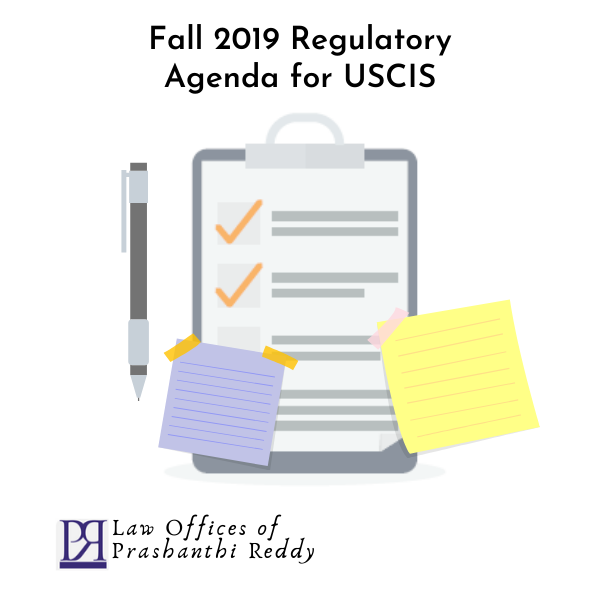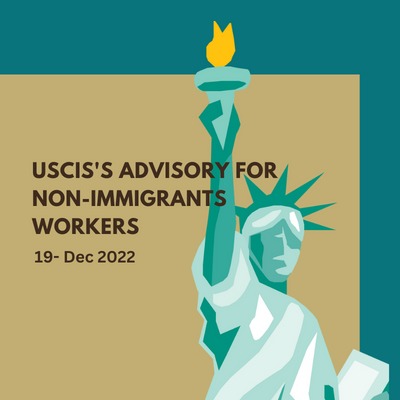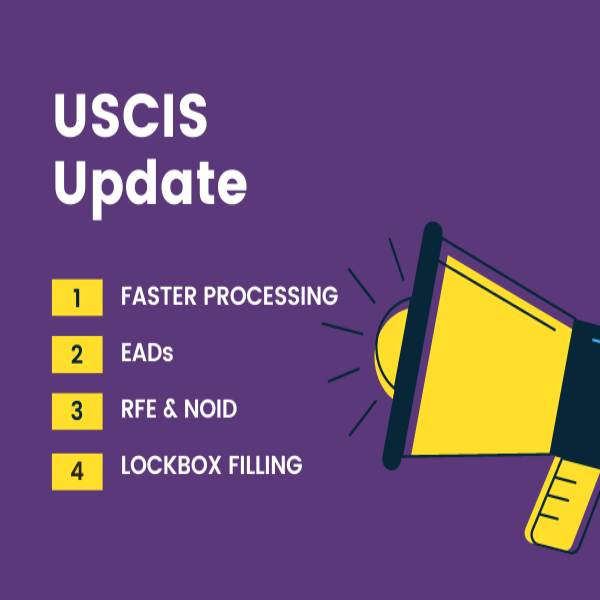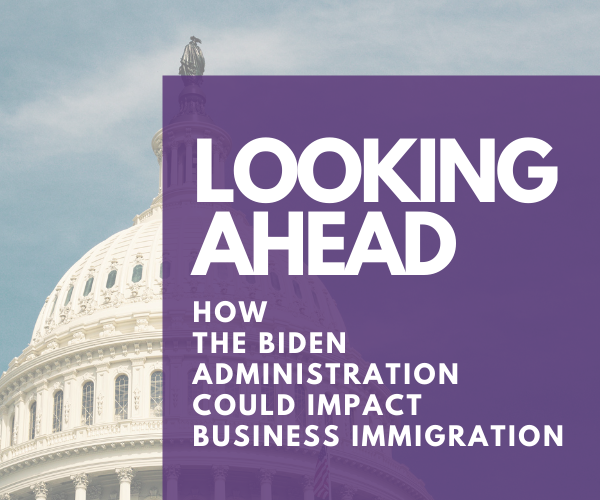Every Spring and Fall, governmental agencies prepare regulatory agendas. This agenda lists the regulatory actions the agency is to tackle within the next 12 months. The regulatory agendas go on to be published in the Unified Regulatory Agenda (Unified Agenda) by the Office of Management and Budget, in conjunction with the General Services Administration and its own Office of Information and Regulatory Affairs. This regulatory agenda is not final, rather it helps keep the public up to date on rules and regulations being developed by the agencies.
Department of Homeland Security (DHS) published its Fall 2019 Statement of Regulatory Priorities on November 21, 2019. A summary of the DHS statement can be found at https://www.reginfo.gov/public/jsp/eAgenda/StaticContent/201910/Statement_1600_DHS.pdf.
In this article, I will be focusing on the regulatory agenda items that are related to the activities of the USCIS.
Strengthening the H-1B Non-immigrant Visa Classification Program
As evident by the title of this rule, the DHS wants to make changes to the H-1B program. These changes are to ensure that the H-1B program is in line with President Trump’s Executive Order 13788, Buy American and Hire American. As such, the strengthening of the H-1B program is to ensure that U.S. workers are protected and the H-1B program only supplements the American workforce.
Policies outlined in the regulatory agenda include:
1 ) The proposal of a registration fee for every petition submitted for the H-1B selection process entitled ‘Fee for Registration Requirement for Petitioners Seeking To File H-1B Petitions on Behalf of Cap Subject Aliens
2 ) The proposal of a rule that readdresses the occupations that qualify as specialty occupations and amends the definition of “employment and employer-employee relationship”.
Removing H-4 Dependent Spouses from the Class of Aliens Eligible for Employment Authorization
The USCIS wishes to rescind the rule introduced on February 25, 2015 entitled ‘Employment Authorization for Certain H-4 Dependent Spouses’. If this rescission goes through, H-4 visa holders, spouses of H-1B beneficiaries, will be unable to acquire an EAD and as such would be ineligible for employment in the United States.
Updating Adjustment of Status Procedures for More Efficient Processing and Immigrant Visa Usage.
DHS proposes to eliminate the concurrent filing of visa petitions and Form I-485 for all applicants seeking an immigrant visa in a preference category and proposes to make further changes to the appropriate dates when applicants can file Form I- 485 and for ancillary benefits.
This rule intends to cut down on processing time for permanent residency. As such, the agency wishes to reduce the processing time of Form I-485 (Application to Register Permanent Residence or Adjust Status ), increase the efficient use of immigrant visas, reduce the occurrence of visa retrogression, improve the quality of inventory data provided to partner agencies, and reduce frivolous or fraudulent filings.
Rules proposed include:
1 ) The elimination of simultaneous filing both a visa petition and Form I-485,
2 ) Changes to the appropriate dates when petitioners can file Form I- 485 and for ancillary benefits.
Strengthening the L-1 Nonimmigrant Classification
This rule is to amend the definition of specialized knowledge and to clearly define employment and employer-employee relationship and to ensure employees with the L-1 visa are paid appropriate wages. According to the DHS, this is to improve the integrity of the L-1 visa program.
Establishing a Maximum Period of Authorized Stay for F-1 and Other Nonimmigrants
The USCIS proposes to amend the period of authorized stay for certain categories of nonimmigrants namely students, exchange visitors and media representatives. Thus will replace the authorized period of stay from D/S (Duration of Status) system currently use with a maximum period of authorized stay with options to extend the period of authorized stay.
This rule will have a huge effect on nonimmigrant students with F-1 statuses. This is to potentially reduce the overstay rates of nonimmigrant students, and make the determination of unlawful presence accrual simple as nonimmigrant students would be admitted into the U.S. with a certain date of expiration.
Practical Training Reform
This proposed rule has to do with the use of practical training options available to nonimmigrant students holding either the F visa or the M visa. These practical training options include the Optional Practical Training (OPT) and the Curricular Practical Training (CPT). This is to reduce fraud in the program and help protect U.S. workers while ensuring the integrity of both the F and the M visa programs.
Nonimmigrant Classes: Temporary Visitors to the United States for Business or Pleasure
The DHS wishes to revise the regulations regarding temporary visitors with the B1 (business) or B2 (pleasure) visa classification. This rule is to clarify the criteria for both classifications. According to the DHS, this is to ensure adjudication and enforcement are fair and consistent. In addition to this, the amendments will ensure that the adjudication and enforcement process is more transparent.
Requirements for Filing Motions and Administrative Appeals
The Department of Homeland Security(DHS) wishes to propose a rule which revises the procedures and requirements for filing motions and appeals before the DHS, USCIS and the AAO (Administrative Appeals Office). This revision is to help the USCIS process motions and appeals expeditiously and cut down on delays.
The DHS hopes the rule ensures efficiency, accessibility, and simplicity of appeals and motions process.
Enhancing the Integrity of the Unlawful Presence Inadmissibility Provisions
This rule wishes to revise how unlawful presence accrual is counts towards three-year and ten-year bars to admissibility. As the previous amendment was effective on April 1, 1997, it has been over 20 years since the last revision. As such, the DHS wishes to introduce regulations that may expand upon or include certain agency policies as well as determine which conditions cam result in unlawful presence accrual. Additionally, this rule would also address how foreign nationals subject to inadmissibility can be admitted to the U.S. after remaining outside the states for the required period.
Collection and Use of Biometrics by U.S. Citizenship and Immigration Services
The DHS proposed an update to its regulations as to the collection and use of biometrics throughout the overall immigration process to eliminate multiple references to certain biometric types as well as expanding the types of biometrics needed for the establishment and verification of identity. In addition, they seek to detect and prevent child trafficking by amending age restrictions. Lastly, they propose to establish consistent identity enrollment and verification processes.
The proposed rule will provide a clear definition of biometrics and the process through which biometrics will be employed by the DHS during the immigration process.
Asylum Reforms
The USCIS in conjunction with the DOJ (U.S. Department of Justice) proposes reforms to the asylum process. The reforms aim at tackling frivolous cases and increasing the efficacy when it comes to the resolution of petitions for foreign nationals barred from applying for asylum.
The proposed amendments also seek to stop or deter fraudulent filing for asylum with the purpose of acquiring EADs.
Removal of International Entrepreneur Parole Program.
In line with President Trump’s Executive Order 13767, Border Security and Immigration Enforcement, the USCIS proposed a rule which if effective would disband the International Entrepreneur Parole program. The International Entrepreneur Parole program is designed to grant qualified foreign entrepreneurs temporary parole in order to build or scale their businesses in the United States.
Currently, the USCIS is reviewing public comments in response to the rule.
Heightened Screening and Vetting in Immigration Programs.
The DHS has proposed regulations that will help the agency that would improve the screening and vetting process in immigration programs. Such regulations and rules include the
1 ) Enhancing the Integrity of the Affidavit of Support
2 ) Collection and Use of Biometrics by U.S. Citizenship and Immigration Services.
3 ) Improvements to the Medical Certification for Disability Exceptions Processing.
Improvements to the Overall Immigration System
The USCIS wishes to propose amendments that would put together means to mandate the digital processing of immigration benefits. According to the DHS, this rule will improve the efficacy and efficiency of operations within the USCIS, and ameliorate the immigration benefits application for foreign nationals (Electronic Processing of Immigration Benefit Requests).
Additionally, the USCIS also proposes the adjusting of specific immigration and naturalization benefit fees so as to make certain the fees cover all costs borne by the USCIS (U.S.
Citizenship and Immigration Services Fee Schedule).
Conclusion
With all the rules lined up, it can be confusing to keep up with the new changes that goes through. Additionally, a lot of the proposed rules may not go into effect. In fact, proposed rules such as the “Strengthening the H-1B Non-immigrant Visa Classification Program”, “Updating Adjustment of Status Procedures for More Efficient Processing and Immigrant Visa Usage ”, and “Establishing a Maximum Period of Authorized Stay for F-1 and Other Nonimmigrants ” has been in the pipeline for both the Fall 2018 and Spring 2019 agendas. The Law Offices of Prashanthi Reddy is always ready to provide help on your immigration cases.
Sources
- Office of Information and Regulatory Affairs (November 21, 2019). U.S. Citizenship and Immigration Services Fee Schedule and Changes to Certain Other Immigration Benefit Request Requirements. Retrieved December 7, 2019, from https://www.reginfo.gov/public/do/eAgendaViewRule?pubId=201910&RIN=1615-AC18
- Department Of Homeland Security (DHS). (November 21, 2019). Fall 2019 Statement of Regulatory Priorities. Retrieved December 7, 2019, from https://www.reginfo.gov/public/jsp/eAgenda/StaticContent/201910/Statement_1600_DHS.pdf
- Office of Information and Regulatory Affairs (November 21, 2019). Updating Adjustment of Status Procedures for More Efficient Processing and Immigrant Visa Usage. Retrieved December 7, 2019, from https://www.reginfo.gov/public/do/eAgendaViewRule?pubId=201910&RIN=1615-AC22
- Office of Information and Regulatory Affairs (November 21, 2019). Strengthening the L-1 Nonimmigrant Classification. Retrieved December 7, 2019, from https://www.reginfo.gov/public/do/eAgendaViewRule?pubId=201910&RIN=1615-AC45
- Office of Information and Regulatory Affairs (November 21, 2019). Establishing a Maximum Period of Authorized Stay for Students, Exchange Visitors, and Media Representatives. Retrieved December 7, 2019, from https://www.reginfo.gov/public/do/eAgendaViewRule?pubId=201910&RIN=1653-AA78
- Office of Information and Regulatory Affairs (November 21, 2019). Practical Training Reform. Retrieved December 7, 2019, from https://www.reginfo.gov/public/do/eAgendaViewRule?pubId=201910&RIN=1653-AA76
- Office of Information and Regulatory Affairs (November 21, 2019). Nonimmigrant Classes: Temporary Visitors to the United States for Business or Pleasure. Retrieved December 7, 2019, from https://www.reginfo.gov/public/do/eAgendaViewRule?pubId=201910&RIN=1651-AA99
- Office of Information and Regulatory Affairs (November 21, 2019). Enhancing the Integrity of the Unlawful Presence Inadmissibility Provisions. Retrieved December 7, 2019, from https://www.reginfo.gov/public/do/eAgendaViewRule?pubId=201910&RIN=1615-AC46
- Office of Information and Regulatory Affairs (November 21, 2019). Requirements for Filing Motions and Administrative Appeals. Retrieved December 7, 2019, from https://www.reginfo.gov/public/do/eAgendaViewRule?pubId=201910&RIN=1615-AB98
- Office of Information and Regulatory Affairs (November 21, 2019). Collection and Use of Biometrics by U.S. Citizenship and Immigration Services. Retrieved December 7, 2019, from https://www.reginfo.gov/public/do/eAgendaViewRule?pubId=201910&RIN=1615-AC14






